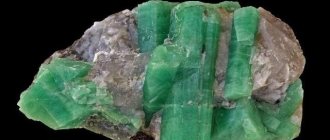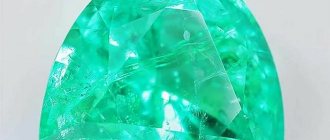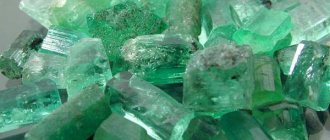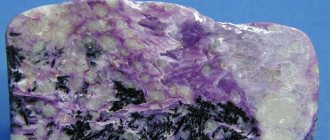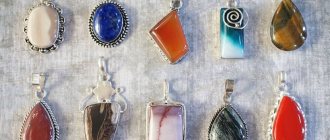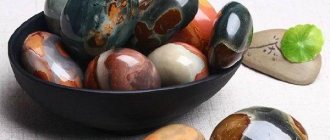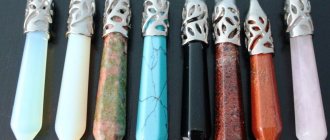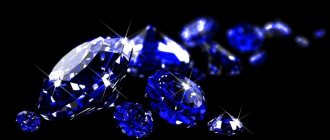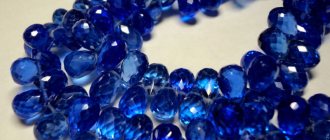Ornamental stone is a mineral that is used in the manufacture of interior items and decorative elements. It is also used as an insert in various decorations. Decorative items include both rare nuggets and less valuable specimens. Each of them has a unique structure and energy. How do experts classify stones? What significance do they have in the life of a modern person?
Classification of stones, their origin and other features
The world of precious stones is harmonious and amazingly beautiful. They are small and large, colored and colorless, hard and brittle, transparent or opaque. Some of them are extremely rare and highly prized by jewelers. Finding others is easy. Affordable, they are as tasty as precious minerals.
Blue agate and zodiac signs
Among all representatives of the Zodiac system, blue agate distinguishes Taurus, Gemini, Cancer and Aquarius:
- Taurus - will become more accommodating and pliable. This will have a positive impact on their relationships with others and will allow them to protect themselves from rash actions.
- Gemini - will learn to set priorities and accumulate strength to achieve strategic goals. The stone will bring harmony to the life of this sign and will have a beneficial effect on the body.
- Cancers - with the help of blue agate they will gain determination and confidence in their abilities. This will make it possible to bring your plans to life and overcome difficulties steadfastly.
- Aquarians will find in blue agate a talisman against envy and ill will. Contact with this stone will sharpen your inner sense and help you avoid serious mistakes.
Blue agate has a positive, but more neutral attitude towards Leo, Virgo, Libra, Scorpio, Capricorn and Pisces:
- Leos - will learn tolerance and restraint.
- Virgos will get rid of excessive shyness and uncertainty, and in relationships with the opposite sex they will become more liberated.
- Libra - will stop doubting themselves, set themselves up in a positive way and achieve results.
- Scorpios - with the help of the mineral they will learn to trust a loved one and will be able to get rid of their temper and jealousy.
- Capricorns will learn to differentiate between work and rest. This will eliminate physical and moral fatigue and will have a beneficial effect on your mood.
- Pisces - the mineral will relieve uncertainty and doubts, and will give strength to implement plans.
It is not recommended for Aries and Sagittarius to wear blue agate. For these zodiac signs, the stone will cause irritability, increased anxiety and nervousness. This will negatively affect all areas of life and relationships with others.
Classification of ornamental stones
According to the generally accepted classification, minerals are divided into precious, semi-precious and ornamental. The first 2 types are hard and durable. They are called precious stones. As described, the samples are mostly opaque. They are classified according to a number of characteristics. One of the important criteria is hardness according to the Mohs table. According to this parameter, semi-precious stones are distinguished:
- Hard (above 5 points). The knife will not leave marks on the surface of this group of stones. Vitreous, micro- and fine-grained - microquartzites, jasper, horns. Different grains of Amazonite are called granite, quartzite, labradorite.
- Medium hardness (3-5 points). The surface can be easily scratched with a regular knife or file. Translucent - fluorite, carbonate onyx. Matte - coil, marble.
- Soft (up to 3 points). The stone also bears traces of nails and writing instruments. These are transparent alabaster, granite, selenite and opaque pyrophyllite, steatite, graphite.
Samples of decorative jewelry are set in silver or used as a decorative material. Many countries around the world are involved in the search for champions. There are large deposits in Russia, Madagascar, South Africa, India, Canada, and South America.
Physicochemical characteristics
Blue agate is a type of quartz with a crystalline structure. The chemical composition of the mineral is silica. The blue color is provided by an admixture of zirconium oxide.
Physical characteristics:
| Index | Description |
| Mohs hardness | 6.5-7 points |
| Density | 2.6 g/cm³ |
| Shine | Matte, becomes glassy after polishing |
| Transparency | Absolutely not transparent |
| Kink | Conchoidal, uneven |
| Structure | Layered |
| Color | Heterogeneous, streaky with streaks |
| Cleavage | Imperfect |
| Interaction with chemicals | Resistant to acids and aggressive chemicals |
When heated, blue agate loses its brightness and richness of shades. You can return the original color of the stone if you leave it in a container with cold water for several hours.
Lace blue agate
Types of precious minerals and their hierarchy
Rare natural minerals include diamond, emerald, ruby, sapphire, alexandrite (see photo). They are distinguished by brilliance and transparency, an exquisite shine. Champions are set in gold and are often passed down through generations. Due to the fact that stones are difficult to divide according to a general criterion, there is no single classification.
Alexandrite
Jewelers consider stones according to one criterion; for gemologists and mineralogists, other characteristics are important. In Russia, they most often refer to the classification and table proposed in 1973 by geologist E.Ya. Kievlenko. It takes into account, among other things, cost characteristics. According to classification, all known minerals and precious stones can be divided into three groups and four orders.
| Order | Groups of stones with names | ||
| Precious | Jewelry and crafts | Ornamental | |
| IN | diamond, emerald, blue sapphire, ruby, alexandrite | jadeite, rock crystal, amber, aventurine, malachite, charoite, hematite | jaspilite, jet, colored marble, marble onyx, fluorite, aventurine, quartzite, obsidian, listvenite, banded skarn |
| II | jad imperial, imperial black, not blue sapphire | labradorite, belomorite, heliotrope, agate, amazonite, colored chalcedony, rainbow obsidian | |
| III | aquamarine, rhodolite, topaz, adularia, demantoid, tourmaline | — | |
| IV | peridot, amethyst, turquoise, citrine, noble spodumene, beryl | — |
Cullinan
Precious specimens are set in gold, platinum, and less often silver of a suitable shade. The highest place in the hierarchy is occupied by the diamond. The hardness of the stone is a reference (10 out of 10 according to the Mohs criterion). No other stone surpasses it in brilliance and value. Cut diamonds sparkle with all the colors of the rainbow. The most famous and expensive stone is called “Cullinan”. It was found in the early 20th century in mines in South Africa. Its fragment, the “Great Star of Africa,” adorns the scepter of British monarchs.
Magic properties
The main magical property of blue agate is the creation of harmony and peace of mind around you. This has a positive effect on all areas of life of the owner of the stone.
Ring with blue agate
A heavenly-colored stone can enhance the positive character traits of a person, neutralize his negative qualities and addictions. It develops gentleness and kindness, makes people more conscious and reasonable, and replenishes lost energy. The gem is worn as a talisman to protect against physical injury and accidents.
Blue agate is a talisman for creative people. It develops hidden gifts and imagination, and inspires new ideas.
For people working in the commercial field, the stone will give confidence and determination. It will help you achieve high results in your activities and develop intellectual and analytical abilities.
The energy of blue agate also has a beneficial effect on love relationships. The stone emphasizes attractiveness, kindles feelings of sympathy and passion between two halves.
Types of semi-precious stones
More than a hundred varieties of semi-precious stones are known, each of which is easy to obtain, process and use in jewelry.
A popular classification, like decorative gemstones, is based on hardness. The higher this indicator according to the Mohs criterion, the higher the degree of preciousness. Another indicator is color.
According to this parameter, stones are distinguished:
- Violet. The combination of red and blue colors gives the stones an unusual shade. Purple, purple, lilac color is a symbol of strength, greatness, wisdom. Among the jewelry nuggets of this shade, Bolivian, charoite, amethyst and sugelite stand out.
- Blue.Nuggets of this color are very rare. Their owners are people with good taste and intelligence. The most famous are lapis lazuli, tanzanite, and turquoise.
- Red. Nuggets carry the energy of fire and earth. These include carnelian, semi-precious ornamental stone garnet, alexandrite, and spinel. Marine corals appear pink and red. They also fall into this category.
- Green. They bring harmony, help you relax and relieve stress. Jade, chrysolite, and chrysoprase are popular.
- Yellow, golden, honey. Symbol of prosperity, wealth, financial success. This category includes amber, topaz, and heliodor.
Jewelry and decorative nuggets are usually set in silver and gold. Most of them are common in Russia and the CIS countries. They are found in the Ural mountains, Altai, Yakutsk and Trans-Baikal regions.
General information
Each stone is unique: it has its own color, pattern, texture. It is impossible to find two identical minerals. To determine their value, experts analyze some characteristics:
- Size. Large specimens can be used to create large crafts.
- Quality of material. The amount of impurities, structure, pattern, color, texture are revealed.
- Rarity. Some minerals are very rare in nature. They are in high demand and are sold individually. Less rare specimens can be purchased in bulk.
- Naturalness. In modern laboratories you can obtain beautiful artificial rocks, but their value is less than that of natural ones.
- Place of extraction. The costs of extracting raw materials can vary significantly. The higher they are, the more expensive the stone.
- Processing process. It depends on the hardness and brittleness of the mineral. This factor affects the cost of the finished product.
- If the stone has a setting made of precious metal, then the value of the product depends on the quality of the metal and the complexity of the work, and not on the cost of the mineral.
- The color of the stone can be changed by painting.
Areas of application of natural ornamental stones
Ornamental stones are popular in many areas of human life: in industry, jewelry, construction and decoration, stone-cutting crafts. The slabs and shavings were used, for example, in the decoration of buildings and subway halls. Some nuggets are essential when developing medical devices.
The beautiful appearance and flexibility of nuggets have made them popular among artisans. Candlesticks, floor lamps, figurines, stationery sets, jewelry, and furniture fittings are made from them. To give the desired shade, stones can be irradiated or exposed to high temperatures. Along with precious and ornamental nuggets, their artificial substitutes and doublets are used, in which a layer of mineral is combined with quartz or glass.
Rhodonite, jasper, amber, malachite, coral, chalcedony, some varieties of transparent glass opal, and citrine are in demand among specialists. In the mysterious spots and veins of real nuggets you can see the play of rainbows and fabulous patterns. Unlike the cool shine of diamonds, they have warm tones and a mysterious shimmer.
Some valuable minerals in crushed form are used in the production of mineral cosmetics. They stimulate blood circulation and even out skin tone, speed up regeneration processes. Precious and semi-precious stones are also of interest to stylists. Their shades and combinations inspire fashion industry experts to create fashion collections. The stones can also be used to decorate luxury clothing, shoes and accessories.
Therapeutic effect
Blue agate is a powerful addition to traditional medicine in the treatment of many diseases.
Blue agate set
The stone has a positive effect on the nervous system. It eliminates nervous tension, helps overcome depression, and increases stress resistance. With regular contact with it, sleep normalizes, fears and obsessive thoughts disappear. In psychotherapy, blue agate is used to alleviate the emotional state of psychological trauma.
Among other medicinal properties of blue agate it is worth noting:
- treatment of respiratory diseases;
- positive effect on the immune system;
- elimination of allergic reactions caused by insect bites;
- normalization of the gastrointestinal tract;
- improved metabolism, weight loss;
- eliminating headaches.
Blue agate helps pregnant women cope with toxicosis and joint pain. The stone protects them from viral diseases and gives them peace of mind.
The most famous jewelry and semi-precious stones and methods for determining their authenticity
It is customary to distinguish between the concepts of “decoration and embellishment” and “decorative and ornamental nuggets.” The first category includes samples used exclusively in the production of jewelry, the second includes minerals widely used in the construction industry and in the manufacture of figurines, souvenirs and accessories. The rarest and most beautiful are selected for inclusion in jewelry.
The list of famous jewelry and decorative items includes: chrysoprase, cat's eye (chrysoberyl), agate, heliotrope, jasper, aventurine, and the decorative mineral tiger's eye. The stones are affordable, but this does not prevent craftsmen from releasing glass fakes to the market.
In order not to run into imitation, when choosing, it is important to consider the following nuances:
- Natural stones are not cheap. For example, turquoise has long been taught to be counterfeited. Stones that are not sold in jewelry stores and big tumblers are 100% fake. To create the effect of antiquity, insects are walled up in gilded glass that imitates amber and sold at affordable prices. Authentic samples of natural resin are very rare and valuable today.
- Gemstones have low thermal conductivity. They are cool to the touch and stay cool for a long time even when held in the palm of your hand. Counterfeits heat up quickly in your hand; they may initially be hot if it’s hot outside.
- When touched, precious stones produce a characteristic sound that is not typical for glass fakes. You can compare the purchased option with another semi-precious stone. Or use a pebble sample. It is easy to identify a fake by the sound made when touched.
- The hardness of a stone will say a lot about its authenticity. In many cases, selenite (Mohs hardness 1.5-2) is passed off as a more expensive moonstone (hardness 6). It is not necessary to scratch and inspect the stone with a knife yourself. You should ask the seller to test the product themselves. For this he always has pencils and testers.
Classifying gemstones is not easy. To classify them as a certain type, many criteria must be taken into account. A more reliable method of assessment is subjective. In any case, each product takes its place in the hierarchy and is valued for its unique properties.
How to wear
Blue agate beads
Jewelry with blue agate is universal. They can be worn both in everyday life and for evening special events. The most elegant and subtle blue agate will highlight the look in the classic style.
Blue agate, chosen as a talisman, should be protected from prying eyes. To do this, it is hidden under clothes.
Lithotherapists also advise wearing the mineral in close proximity to the body. This will allow the agate to maximize its healing properties and thereby affect the body. At the same time, it is recommended to remove the blue agate product at night so that the stone can restore lost energy.
Mosaic art
One of the artistic trends in the use of ornamental stone has become mosaic - creating a single image from small pieces, in this case stones. Precise selection of the shape and color of individual components gives smooth color transitions and clear lines of the overall picture.
Roman mosaic
Art has been known since ancient times, when the Greeks (2nd century BC) were famous for their skill in this field. In the Roman Empire, which was rapidly growing richer and developing during the era of Julius Caesar, Greek craftsmen were invited to work and train apprentices - this is how the technique of Roman mosaics was born on the Apennine Peninsula. At first, the drawings were very simple: a set of geometric shapes and inscriptions. And the material was simple pebbles. But gradually the art of mosaic developed, the technique was honed, and the images became more and more skillful, they were like paintings: colored glass (smalt), marble, limestone, and ornamental stones were added to the pebbles; the seams became thinner, they were filled with paint to match. Mosaic became so widespread that it was used to decorate floors, walls, and ceilings by both ordinary Romans and the richest, and they even used it to pave roads.
Florentine mosaic
Mosaic art received a revival in the Middle Ages in Italy, or more precisely in Florence, hence the name of the new technique - Florentine mosaic. It is distinguished by its high complexity and thoroughness, and at the same time high artistic value. An ideal solid pattern is obtained through skillful cutting and adjustment of stones in size and color, forming images without seams (comesso), with smooth lines and complex shapes, subtle color transitions.
In the 16th century n. e. Ferdinand I of the famous Medici dynasty opened the stone-cutting workshop “Gallery Dei Lavori”, where the first experiments in composing colored stone paintings began. Craftsmen created boxes, game boards, plaques, tabletops, and other furniture elements. Most of all, natural materials were used such as jasper, agate, onyx, marble, chalcedony, quartz, rock crystal - the so-called “pietra dura” (hard stones). For each mineral, a special method of preparation and processing was selected in order to make maximum use of the color capabilities of the material. The art of Florentine mosaic flourished until the 19th century, when people's interest in it faded away, turning to painting and architecture.
Russian mosaic
Russian mosaic is also known, which appeared thanks to M. Lomonosov in the 18th century. It is strikingly different from the Florentine one:
- It is performed not only on flat, but also on curved surfaces;
- On a base of durable inexpensive stone, a pattern of malachite (or other colored stone) plates is glued, creating the impression of a monolith;
- Symmetrical, diverging patterns;
- Sometimes the size is impressive (masters created countertops, doors, columns, entire rooms).
It is worth noting that malachite itself is completely unremarkable in appearance; wonderful natural patterns are revealed when cutting the stone into layers. Ural craftsmen used this stone-cutting technique to work with jasper and lapis lazuli.
Glyptic art
Among others, one of the first arts associated with stone work was glyptics - miniature carving. Gems with male and female faces, silhouettes of animals and even entire paintings carved on gems and shells have been perfectly preserved, having passed through centuries and even millennia. In Ancient Mesopotamia already in the 4th millennium BC. e. they made carved figures of people and animals from stone, and 10 centuries later - intaglio gems. Examples of the art of ancient Sumerians have survived to this day - carved figures and inscriptions on cylinders made of chalcedony and jasper. Stone carving was also used to make seals.
There are 2 types of gems:
- With an in-depth image (intaglio);
- With convex (cameo).
In the tomb of King Tutankhamun, which survived the hands of robbers, scientists discovered jewelry made of lapis lazuli and turquoise. In Ancient Egypt, lapis lazuli was considered one of the most expensive stones, it was called the “son of heaven”, it was considered the personification of the fact that the ruler is the earthly viceroy of the sun god Ra, therefore it was often used in the manufacture of statues of pharaohs and gods, gems, and body jewelry. A scarab beetle made of blue stone was placed into the heart of a deceased ruler during embalming.
Cameo agate carving
The first cameos began to be made in the 4th-3rd centuries. BC. The carving was done on sardonyx and agate: the craftsmen already had knowledge about the multi-layering of stones, and used them in their work to obtain smooth or, conversely, contrasting color transitions.
Initially, gems were used only as decorations and talismans, but later they received the status of seals, which at that time replaced the signature of an important person, the lock, and the key to it. Rich nobles collected entire collections of gems; at the imperial and royal courts there was a separate position of carver.
In ancient Slavic culture, stone processing initially consisted of creating polished asymmetrical cabochons that preserved the pristine beauty of the minerals. Among the monuments of the pre-Mongol era you can see amber, quartz, carnelian necklaces and earrings, and handicrafts made from river pearls. Over time, the art of making frames has developed greatly, which, thanks to the skillful hand of the master, emphasizes and enhances the beauty of minerals.
Pomegranate intaglio
Particular value was attached to stone-cutting crafts primarily because of their durability - jewelry and other products passed from generation to generation, surviving any wars, epidemics and natural disasters. The many statues of different eras, varied in beauty, manufacturing technique, and materials used, are excellent proof of this. In ancient times, Greek masters created individual sculptures and entire ensembles; they preferred fragile marble, believing that only it could truly reflect the beauty and grace of the human body. A masterpiece of a much later time (mid-19th century) by Raphael Monti, made from a special type of marble, amazes the human eye with the delicacy of its work: it is difficult to believe that the “Marble Veil” was carved from stone.
